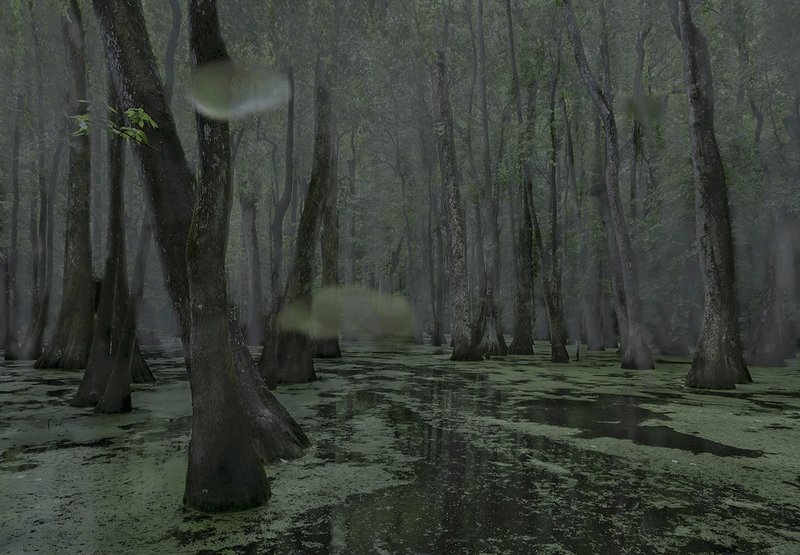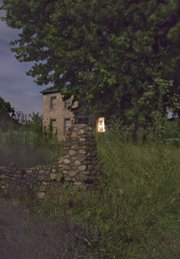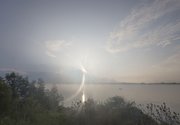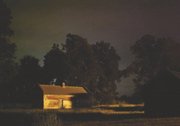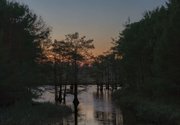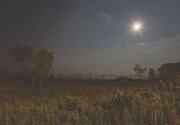Night after night, across three and a half years and 1,400 miles, photographer Jeanine Michna-Bales waded bayous, climbed hills, traveled down deserted roads, braved graveyards and stayed up way too late way too many times in a row.
She wasn't hunting ghosts, but she ended up revealing them in a unique series titled "Through Darkness to Light: Seeking Freedom on the Underground Railroad."
FAQ
‘Through Darkness to Light’
WHEN — Through May 28
WHERE — Fort Smith Regional Art Museum
COST — Free
INFO — 784-2787
FYI
The Book
“Through Darkness to Light: Photographs Along the Underground Railroad,” was published by Princeton Architectural Press and released Feb. 7, 2017. It includes a forward by Andrew. J. Young and essays by Fergus M. Bordewich, Robert F. Darden and Eric R. Jackson. It is available at amazon.com and other bookstores.
"My first brush with the Underground Railroad was part of our curriculum in school," says Michna-Bales, who grew up between her mother's home in Indiana and her father's house in Florida. "I remember being fascinated with the topic and amazed that people had to go through that just to be free."
Under the cover of darkness, Michna-Bales explains in an introduction to her exhibition, on show through May 28 at the Fort Smith Regional Art Museum, an estimated 100,000 slaves traveled north to freedom in the decades prior to the Civil War. The Levi Coffin house -- now the Levi and Catharine Coffin State Historic Site -- was just about an hour and a half away from Michna-Bales in Fountain City, Ind., and there she learned more about the couple as "conductors" on the Underground Railroad, helping fugitive slaves continue their journey to safety in Canada between the years of 1839 and 1847. They were so successful that he is sometimes called the "president" of the Underground Railroad and the house "Union Station."
Michna-Bales set aside her interest in the topic to major in advertising in college, then went to a portfolio school in Atlanta and finished at an advertising school in Florida. "I had to take photography to be able to have creative conversations with a photographer," she explains, and in 2012, she gave up advertising and decided to become a full-time photographer.
The Underground Railroad had already returned to her mind in 2002 during her daily practice of brainstorming into a journal. "I'd work on it, get frustrated, go back to advertising, get frustrated with advertising and go back to the project," she says. But during a trip home, a visit to the Indiana Historical Library launched the idea into orbit. She found a manila folder stuffed full of one librarian's research into the Underground Railroad.
"It was three inches thick, information from the 1800s to 2000-whatever," she remembers. "It was exactly what I needed. That research led me to other research -- basically , it took me 10 years or so to research it and three and a half years to photograph the whole thing."
Taking the first-person approach, Michna-Bales spent the days looking for locations where an escaped slave might have run, hidden, watched, waited and prayed, and the nights photographing that route. She traveled across Louisiana, Mississippi, Alabama, Tennessee, Kentucky, Indiana, Michigan and finally Ontario, Canada, accompanied in turns by her stepfather, her mother, her brother-in-law, off-duty police officers and a German shepherd dog. (Her husband went once, she says, and said never again.)
"A lot of research was very vague, so we'd have to drive around and ask local people," she says. "And we quickly figured out what it looks like during the day is not what it looks like at night. It took a bunch of different factors coming together to yield a good picture."
Asked if she was ever afraid, Michna-Bales pauses only a second before saying yes. One time, she and her brother-in-law were stalked by coyotes on the Natchez Trace, and another time, a car sped toward Michna-Bales and her sister in the middle of the night, in the middle of nowhere. "Just let me get the shot," she pleaded, camera in hand. "GET IN THE CAR," her sister insisted. And once, she says, she and an off-duty police officer were visiting an old church dating to the 1700s, settled among a circle of cemeteries. At about 3:30 in the morning, she and the officer turned to each other: "Did you hear that?"
"I did definitely feel a presence at times," she says. "The hairs on the back of my neck stood up at times."
Most of what Michna-Bales felt, however, was a continuing awe that humans survived the back-breaking, spirit-crushing trek to freedom.
"The Underground Railroad was America's first civil rights movement," she says. "It blurred racial lines, socioeconomic lines, gender lines -- so many people worked together to end the social injustice of slavery. It's fascinating that so many disparate groups worked together. It's a road map from history for us to use today, when we are so polarized and so divided."
As a Caucasian woman, taking the first-person approach didn't set well with one African-American photographer, she admits. "She thought the project should have been done by somebody descended from a slave." Michna-Bales says she thought about her response for a long time.
"I told her I had been working on the project for a very long time, and the reason I had chosen the first-person point of view and not telling it from a station master's perspective is that it felt like taking the slaves' agency away. It was their work that got them free. In the end, I think she kind of saw where I was coming from."
Through her collection of photos and a book -- in which she presents quotes and narratives from the time period with her images -- Michna-Bales says she's been invited into rooms where white, black, Asian, Hispanic and other students were talking about the topic. And she's been in other rooms where the all-white audience had probably never had this conversation in public.
"I think it's doing some good."
NAN What's Up on 04/14/2017

